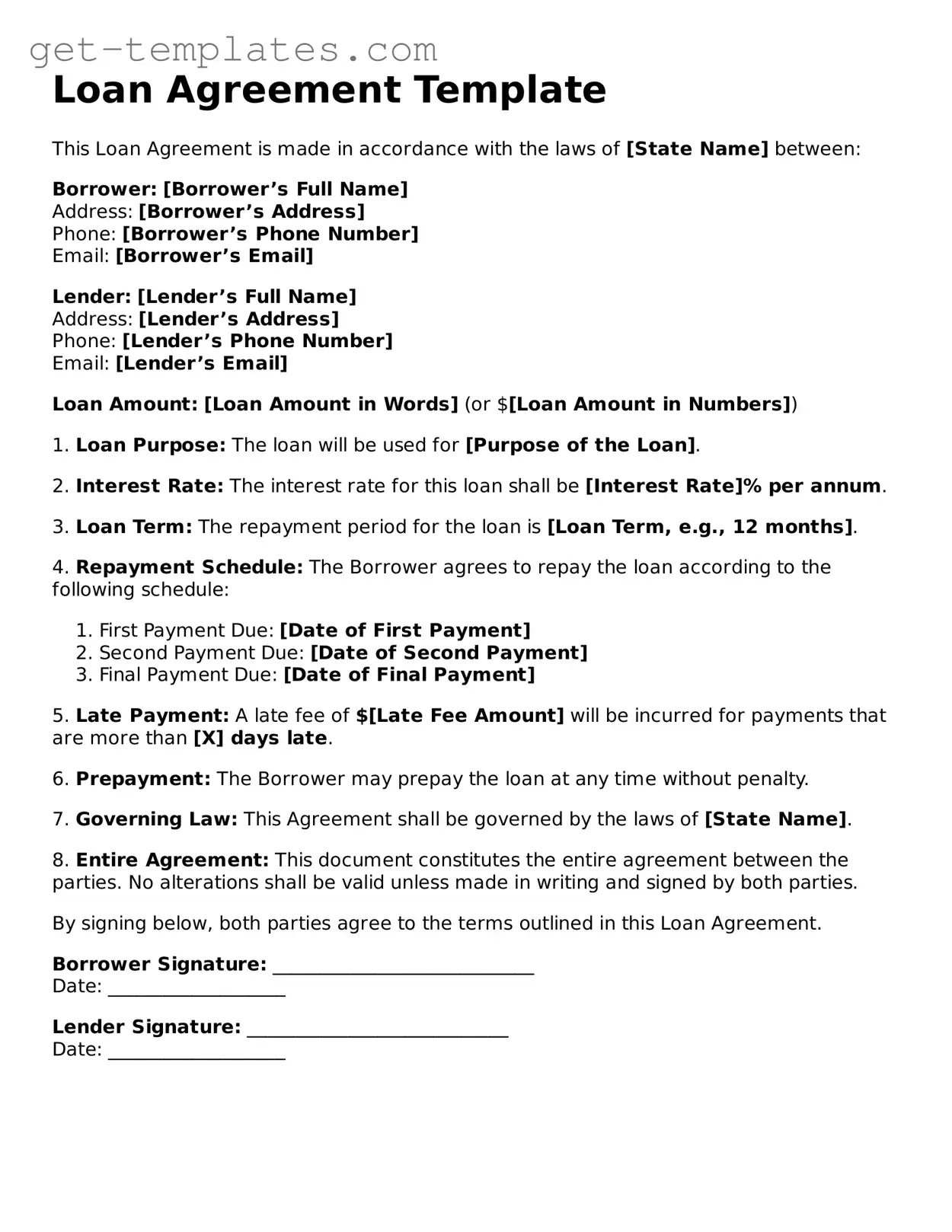Loan Agreement Template
This Loan Agreement is made in accordance with the laws of [State Name] between:
Borrower: [Borrower’s Full Name]
Address: [Borrower’s Address]
Phone: [Borrower’s Phone Number]
Email: [Borrower’s Email]
Lender: [Lender’s Full Name]
Address: [Lender’s Address]
Phone: [Lender’s Phone Number]
Email: [Lender’s Email]
Loan Amount: [Loan Amount in Words] (or $[Loan Amount in Numbers])
1. Loan Purpose: The loan will be used for [Purpose of the Loan].
2. Interest Rate: The interest rate for this loan shall be [Interest Rate]% per annum.
3. Loan Term: The repayment period for the loan is [Loan Term, e.g., 12 months].
4. Repayment Schedule: The Borrower agrees to repay the loan according to the following schedule:
- First Payment Due: [Date of First Payment]
- Second Payment Due: [Date of Second Payment]
- Final Payment Due: [Date of Final Payment]
5. Late Payment: A late fee of $[Late Fee Amount] will be incurred for payments that are more than [X] days late.
6. Prepayment: The Borrower may prepay the loan at any time without penalty.
7. Governing Law: This Agreement shall be governed by the laws of [State Name].
8. Entire Agreement: This document constitutes the entire agreement between the parties. No alterations shall be valid unless made in writing and signed by both parties.
By signing below, both parties agree to the terms outlined in this Loan Agreement.
Borrower Signature: ____________________________
Date: ___________________
Lender Signature: ____________________________
Date: ___________________
